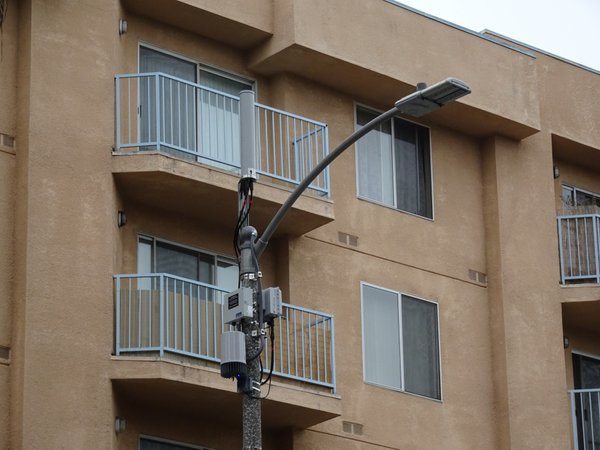But the devil is in the details…
The Internet of Things (“IoT”) era has begun, and rapid growth is upon us. Experts predict that by 2020 anywhere from 21 billion to 50 billion devices will be connected, up from about 6 billion today. The precipitous growth in IoT will create an exponential increase in data demands, which cannot be met with today’s network capacity. In North America alone, projected data demand will rise from about 700,000 terabytes in 2016 to more than three million terabytes by the end of 2020. It is nearly universally agreed that integration of small cells and distributed antenna systems (“DAS”) into existing wireless networks is essential to meet the crushing data demands that will be fostered by IoT.
Small cell deployment regulatory issues
In order to provide the necessary coverage for IoT, small cells and DAS must be densely deployed on a wide-scale basis. This will necessitate access to numerous facilities such as towers, buildings, poles, and rights-of- way (“ROW”). Obtaining such access requires zoning authority from the localities that have jurisdiction over the proposed small cell/DAS sites.
Historically, obtaining zoning authority for installing radiofrequency (“RF”) transmission equipment has been a long, painstaking process; carriers were forced to wend their way through a myriad of complex regulations, often without knowing when a decision would be made on their
applications. Beginning in the 1990s, the Federal Communications Commission (“FCC”) implemented rules that preempted some types of local regulations that caused inordinate delays to the deployment of telecommunications services. Because of the uncertain regulatory classification of IoT (i.e., IoT is generally considered a lightly regulated “information service” as opposed to a telecommunications service), it is questionable whether those rules would apply to small cells and DAS that are deployed for IoT purposes.
Feds preempt local regulations to expedite small cell/DAS deployment
In 2014 the FCC, recognizing the need to promote wireless broadband infrastructure development, promulgated rules that make it much easier for providers of certain types of small cells and DAS to obtain local authority for deployment; those rules became effective in 2015.
The crux of the rules, which implemented Section 6409(a) of the Middle Class Tax Relief and Job Creation Act of 2012 (“Section 6409(a) Rules”), requires state and local governments to approve any “eligible facilities request” for modification of an existing tower or base station that does not substantially change the physical dimension of same. The Section 6409(a) Rules are not limited to telecommunications services; they encompass the deployment of wireless transmission equipment such as transceivers, antennas, coaxial of fiber-optic cables, and back-up power supplies, used to provide IoT services.
Key aspects of the Section 6409(a) rules
The Section 6409(a) rules are quite comprehensive, covering many different aspects of small cell and DAS siting. Hence, a full review of these rules is beyond the scope of this article. But, the following summaries provide a suitable overview of the main points.
● An “eligible facilities request” means an application or written request for collocation (installation), removal, or replacement of transmission equipment on an eligible support structure.
● An “eligible support structure” means any tower or base station that is existing at the time an eligible facilities request application is submitted to the state or local government. An “existing tower” is one that has been approved by the local authorities. An “existing base station” is a non-tower structure that has been approved and houses existing RF equipment or an antenna.
● A “substantial change” means different things, depending on whether the proposed facility is located in a ROW or not. In general, any equipment that increases the height of the structure by more than 10 feet or protrudes more than 20 feet from the edge of the tower would be a substantial change. Additionally, installing more than four equipment cabinets, excavation of a site, or “defeating” a structure’s concealment elements would be considered substantial changes.
● Localities are subject to a 60 day “shot clock.” A local government must act on an eligible facilities request within 60 days of submission, or it is deemed granted. A local government many toll the shot clock if it returns an application as defective or incomplete.
● The rules apply only to localities acting in their roles as land use regulators, not when acting in their proprietary capacities. Hence, the rules do not apply when a provider seeks to deploy small cells or DAS on property owned by the local government, such as city-owned light posts and bridges.
● The rules provide for limited exemptions to the National Environmental Policy Act (“NEPA”) and the National Historical Preservation Act (“NHPA”) regarding small cell and DAS deployment. Under certain circumstances, providers are exempted from having to submit lengthy reviews when a proposed build-out has the potential of affecting environmentally sensitive areas or encroaches on an area deemed a National Historic Landmark.
Next week: Section 6409(a) application contents and processing

